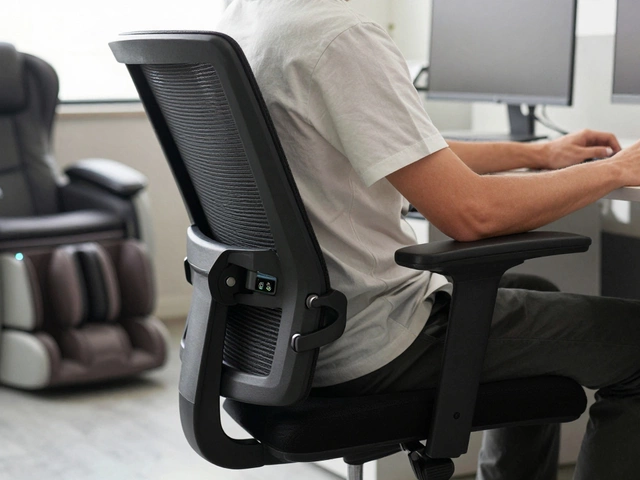Office Ergonomics: Simple Steps to a Healthier Workday
Ever get that nagging ache after a long day at the desk? Chances are your workspace isn’t set up for your body. Good office ergonomics isn’t a luxury – it’s a must‑have habit that keeps you comfortable, focused, and injury‑free. In this guide we’ll break down the basics, show you quick fixes, and give you a checklist you can start using right now.
Why Ergonomics Matters for Your Daily Grind
When your chair, monitor, and keyboard work together, you waste less energy fighting pain. Poor posture can turn a simple email task into a back‑breaker, and that tension lowers concentration. Studies show that ergonomic setups can boost productivity by up to 12 %. So fixing your workstation isn’t just about feeling better – it directly improves the quality of your work.
Quick Desk Tweaks You Can Do Today
1. Monitor Height: Your screen’s top line should sit at eye level. If you have to tilt your head up or down, you’re already stressing neck muscles. Use a stack of books or a monitor stand to get it right.
2. Chair Adjustment: Sit back so your lower back touches the chair’s lumbar support. Adjust the seat height so your feet rest flat on the floor and your knees form a 90‑degree angle. A small lever usually does the trick.
3. Keyboard & Mouse Placement: Keep them close enough that your elbows stay near your body and form a relaxed 90‑degree angle. If you feel your shoulders hunching, slide the keyboard forward or use an ergonomic keyboard.
4. Take Micro‑Breaks: Every 45‑60 minutes, stand, stretch, or walk around for a minute. Simple moves like shoulder rolls or wrist flexes release built‑up tension and reset circulation.
5. Light & Glare: Position your monitor to avoid direct sunlight or harsh overhead lights. A matte screen filter can cut glare, and a desk lamp with a warm tone reduces eye strain.
These tweaks don’t require a full office remodel – just a few minutes of adjustment and you’ll notice less fatigue.
Beyond the basics, think about adding a sit‑stand desk if your budget allows. Alternating between sitting and standing every 30 minutes keeps muscles active and can lower the risk of chronic back issues. If a full sit‑stand desk is out of reach, a simple desktop riser works just as well for short bursts of standing.
Finally, pay attention to your habits. Slouching, crossing legs, or cradling the phone between shoulder and ear are all easy to correct once you’re aware of them. Set a reminder on your phone or computer to check your posture throughout the day.
By taking these small steps, you turn your office into a place that supports your body instead of fighting it. Comfortable, healthy posture means fewer sick days, sharper focus, and a happier you at the end of the workday. Start with one change today – you’ll thank yourself tomorrow.
Is Sitting All Day Bad? Health Risks, Surprising Facts, and Practical Tips
Wondering if sitting all day is ok? Discover the health risks, eye-opening facts, and simple tips to stay healthy at your desk.
What Happens if Your Office Chair is Too High?
Sitting in an office chair that's too high might seem like a minor discomfort, but it can cause a range of issues. From poor posture leading to back and neck pain to reduced productivity due to discomfort, the impact is more significant than one might think. Finding the perfect chair height can make a huge difference in your workday comfort and overall health.






